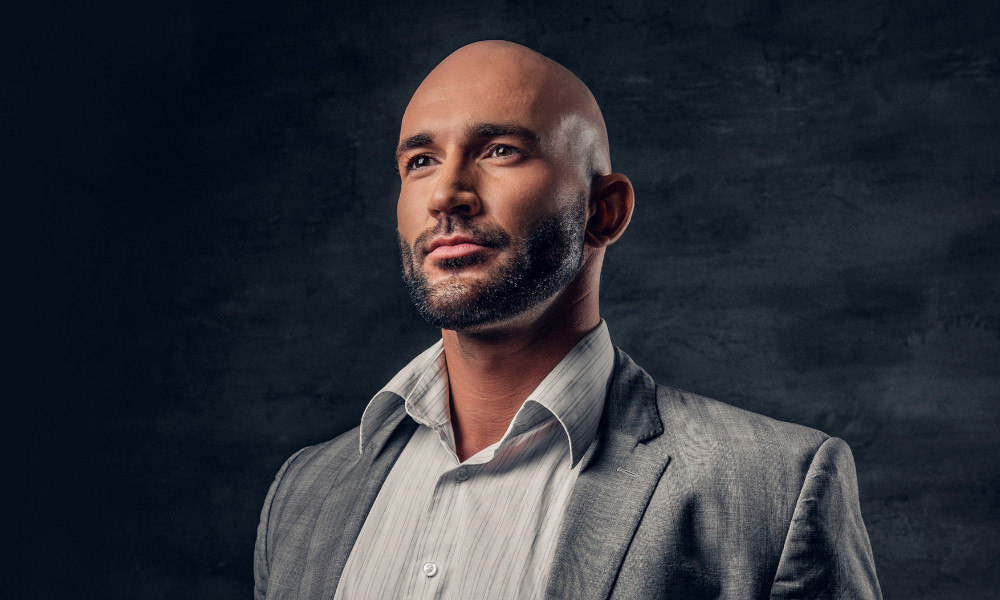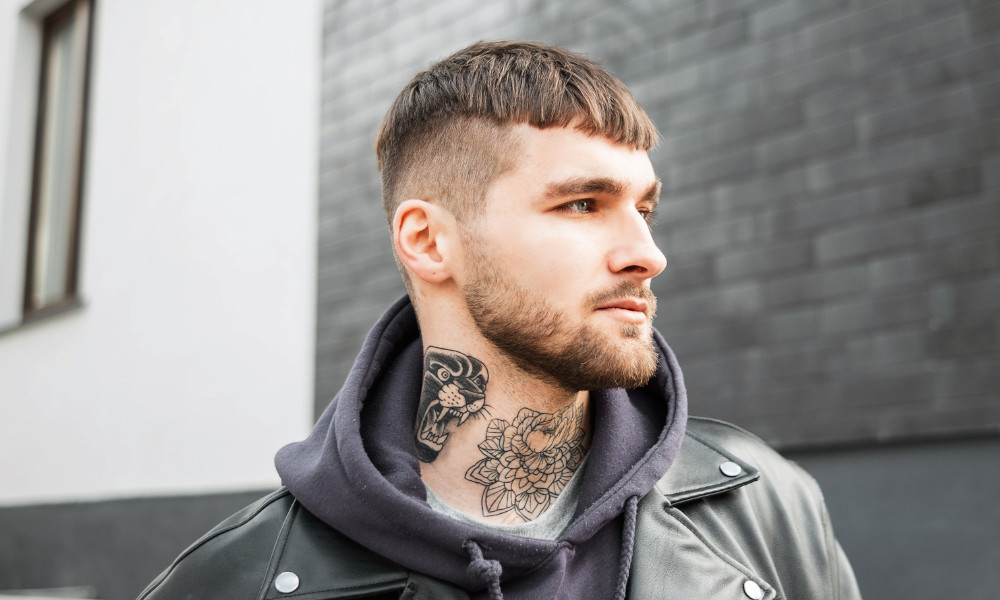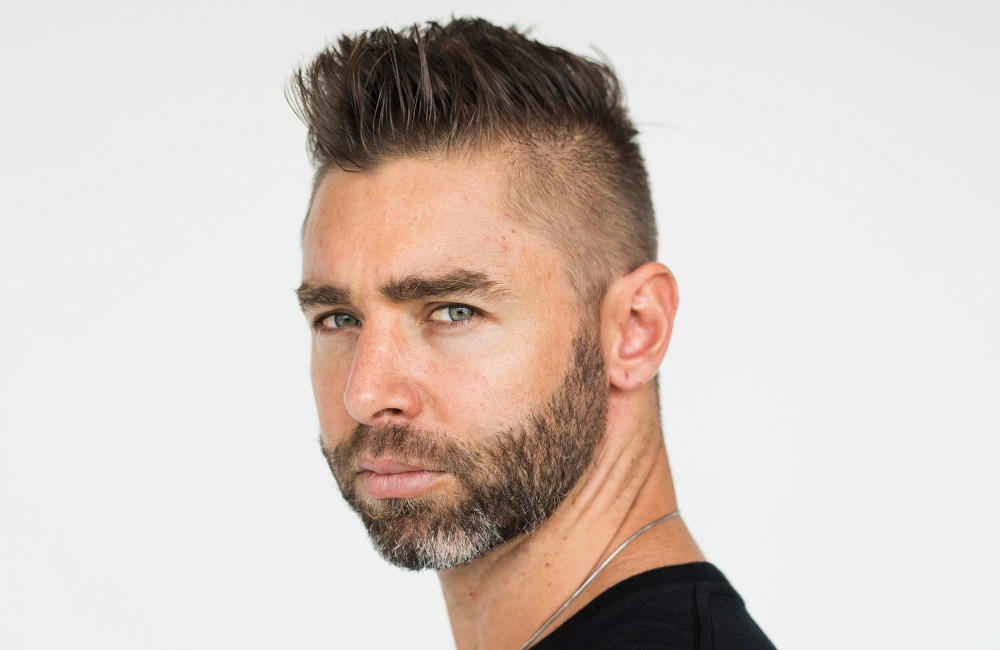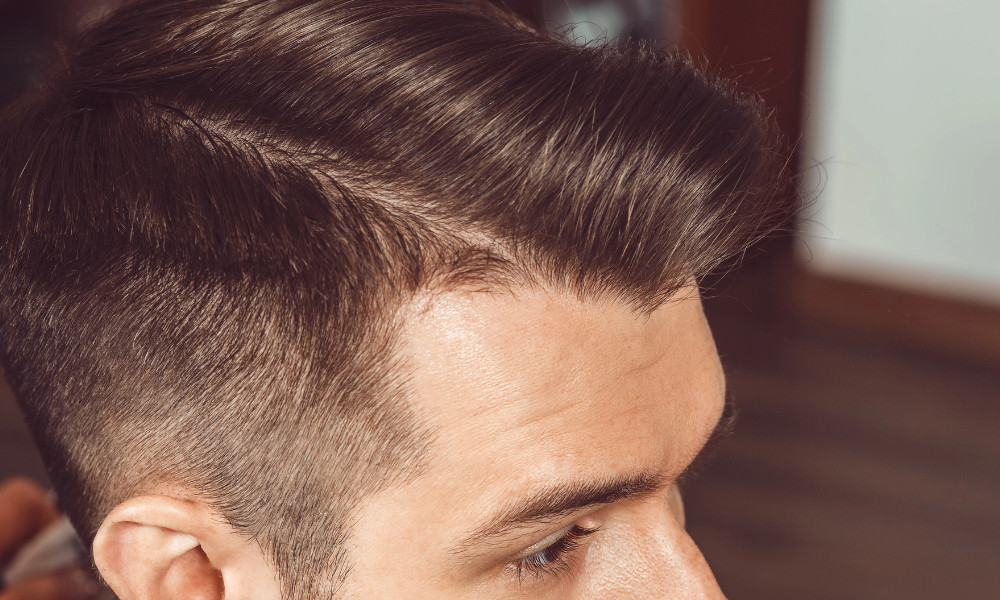Best Hairstyles To Hide Male Pattern Baldness

Content by

Last Updated
Start a Consultation Today
See our range of Men's Hair Loss Treatments
Delivered discreetly from our UK Pharmacy.
Table of Contents
- What Are the Best Hairstyles and Haircuts for Balding Men?
- Other Ways To Disguise Hair Loss: Consider Growing Out Your Beard
- What Causes Male Pattern Baldness?
- Can I Treat Male Pattern Baldness?
Balding at the crown or a receding hairline is a common condition that affects men as they age. Male pattern baldness (MPB) is the most common form of hair loss, affecting 30% to 50% of men by the age of 50. [1]
It can lead to a sense of insecurity in men, impacting their confidence and self-esteem. One thing that men can do is consider changing their haircut or style. We have compiled a list of the best haircuts and hairstyles for balding men to regain their self-esteem. Read on for more tips and to learn what causes MPB and how to treat it.
What Are the Best Hairstyles and Haircuts for Balding Men?
Instead of making a bald spot stand out with a mullet or a combover, the following haircuts and hairstyles for men work with the amount of natural hair that is left, effectively concealing any balding or thinning areas while creating a stylish appearance.
- Bald Head

For men who are experiencing severe MPB, embracing a bald head can be a brave and bold choice. Shaving the head completely can create a clean and polished look, and eliminate any insecurities about hair thinning or loss. Those who embrace a shaved head will agree that it can be liberating and gives them a new sense of confidence.
Additionally, a bald head is a low-maintenance and timeless style that never seems to go out of fashion. Well-known celebrities who are completely bald include Bruce Willis and Dwayne Johnson. To balance the look, consider growing out your facial hair.
- Buzz Cut

A buzz cut is a classic hairstyle that works well for men with balding hair. Keeping the hair short all over can help to disguise any thinning or bald spots. This low-maintenance style is also versatile and can be tailored to suit individual preferences.
It's also a great option for men who have receding hairlines, as it creates a uniform look and minimises the appearance of thinning hair. Jason Statham and Channing Tatum are some celebrities who rock the buzz cut.
- Crew Cut

Similar to a buzz cut, the crew cut is another short hair style that can hide MPB. The hair on the sides and back is usually cut short and tapered, while the top is left slightly longer. This style creates the illusion of thicker hair on the crown and provides a more youthful appearance. Adding some texture to the top can also help to add volume and hide any bald spots. Ryan Reynolds, Zac Efron and Brad Pitt are well-known faces who style a crew cut.
- Caesar Cut

The Caesar cut is another classic hairstyle that has been popular for decades. This style features short, horizontally straight-cut bangs and a uniform length all around the head. The Caesar cut is an excellent option for men dealing with MPB because it creates a clean and structured look that minimises the appearance of thinning hair. The short length of the hair also helps to draw attention away from any balding areas, making it a great choice for those who want to disguise their hair loss.
- Faux Hawk

This edgy and modern style features shorter sides and longer hair on top that is styled upwards to create a spiked or pointed look. The faux hawk is a versatile hairstyle that can be adapted to suit different hair types and lengths, making it a great option for men with thinning hair.
By creating volume and height on top, the faux hawk draws attention away from any balding areas and creates a stylish and youthful appearance. This hairstyle is perfect for those who want to embrace their hair loss and make a bold fashion statement. David Beckham is known for his popular haircuts through the decades, including the faux hawk.
- Side Parting

A side part is a simple yet effective way to hide MPB. By creating a deep side parting and combing the hair to one side, men can cover up a receding hairline or thinning crown. This classic hairstyle is versatile and can be worn with various hair lengths and textures. Ryan Gosling and Justin Timberlake are some familiar faces with a side-part hairstyle.
- Slicked Back

Slicked-back hair is another great option for men dealing with MPB. This timeless and sophisticated style involves combing the hair back and using hair wax or gel to hold it in place and create a sleek appearance. Slicked-back hair works well for concealing balding areas because it creates a smooth and uniform look that draws attention away from any thinning or receding hairlines.
It is a great choice for those who want a refined and elegant look that helps to minimise the effects of MPB. Celebrities such as Leonardo DiCaprio and Chris Evans often have slicked-back hair on the red carpet.
- Textured Crop

The textured crop is a modern hairstyle that involves cutting the hair short and adding texture to create a messy and effortless look. This style can be a great option for men with thinning hair, as the added texture can help to create the illusion of thicker hair.
Other Ways To Disguise Hair Loss: Consider Growing Out Your Beard
For those experiencing MPB, growing out a beard can be an effective way of boosting your confidence. A well-groomed beard can draw attention away from the hairline and balances facial features, creating a more youthful and dynamic look. Depending on your beard growth and personal style, various beard styles—from a full beard to a neatly trimmed goatee—can help frame your face and enhance your overall aesthetic. Not only does this approach divert focus from thinning hair on the scalp, but it can also add a touch of sophistication or ruggedness to your persona.
What Causes Male Pattern Baldness?
In most cases, MPB is a genetic hair condition. This means if balding runs in the family history, you are more likely to experience it with age. It is caused by a high level of dihydrotestosterone (DHT), a type of androgen in the male body. This hormone is converted from testosterone by an enzyme called 5-alpha reductase. High DHT levels in the male body can shrink hair follicles and stop hair growth, leading to hair thinning or loss in specific areas such as the hairline or on the crown of the head in men. [2]
Can I Treat Male Pattern Baldness?
MPB can’t be prevented, but it can be treated. Without treatment, it can lead to permanent hair loss and complete baldness. While the above haircuts can help hide signs of MPB, it can progress over time, so it must be treated at its source if you want fuller and thicker hair. For this reason, it is best to treat early stages of MPB.
Fortunately, there are many treatment options for MPB to choose from including topical sprays, oral medications, laser therapy and hair transplants. [3] If you are concerned about MPB, speak to your healthcare provider before starting any treatment.
At Chemist Click, our hair loss treatment range varies from Finasteride and Propecia oral tablets to Minoxidil topical spray and Regaine Extra Strength Foam For Men to suit different needs and preferences. To start your journey to thick and long hair, complete a free online consultation, where one of our licensed pharmacists will review your details and prescribe a treatment that is safe for you.
Sources
- Asfour L, Cranwell W, Sinclair R. (2023). Male Androgenetic Alopecia. Retrieved 13th September 2024, from: https://www.ncbi.nlm.nih.gov/books/NBK278957/
- Cleveland Clinic. (2022). Male Pattern Baldness (Androgenic Alopecia). Retrieved 13th September 2024, from: https://my.clevelandclinic.org/health/diseases/24515-male-pattern-baldness-androgenic-alopecia
- NHS. (2024). Hair Loss. Retrieved 13th September 2024, from: https://www.nhs.uk/conditions/hair-loss/
Whilst all of our content is written and reviewed by healthcare professionals, it is not intended to be substituted for or used as medical advice. If you have any questions or concerns about your health, please speak to your doctor.
